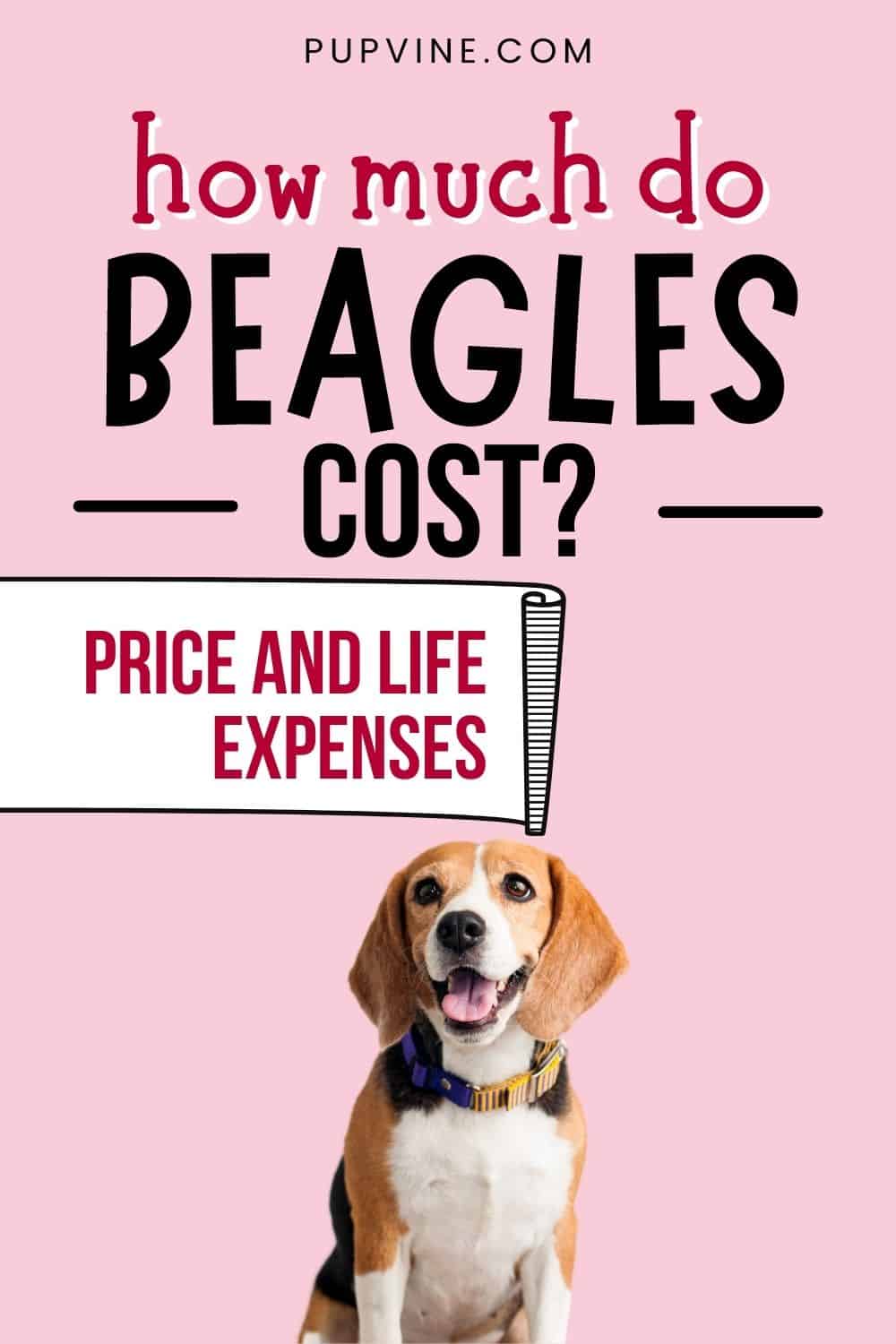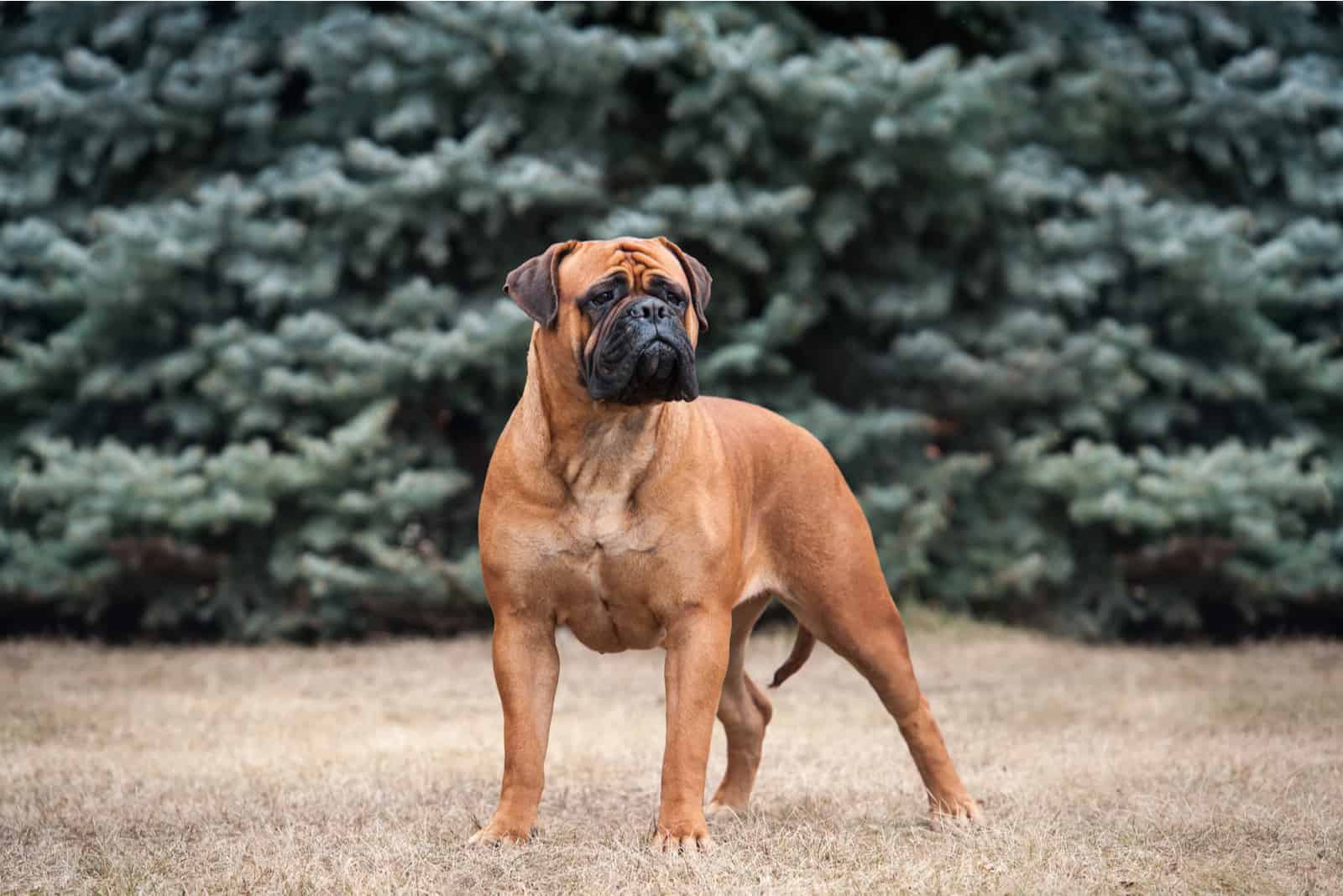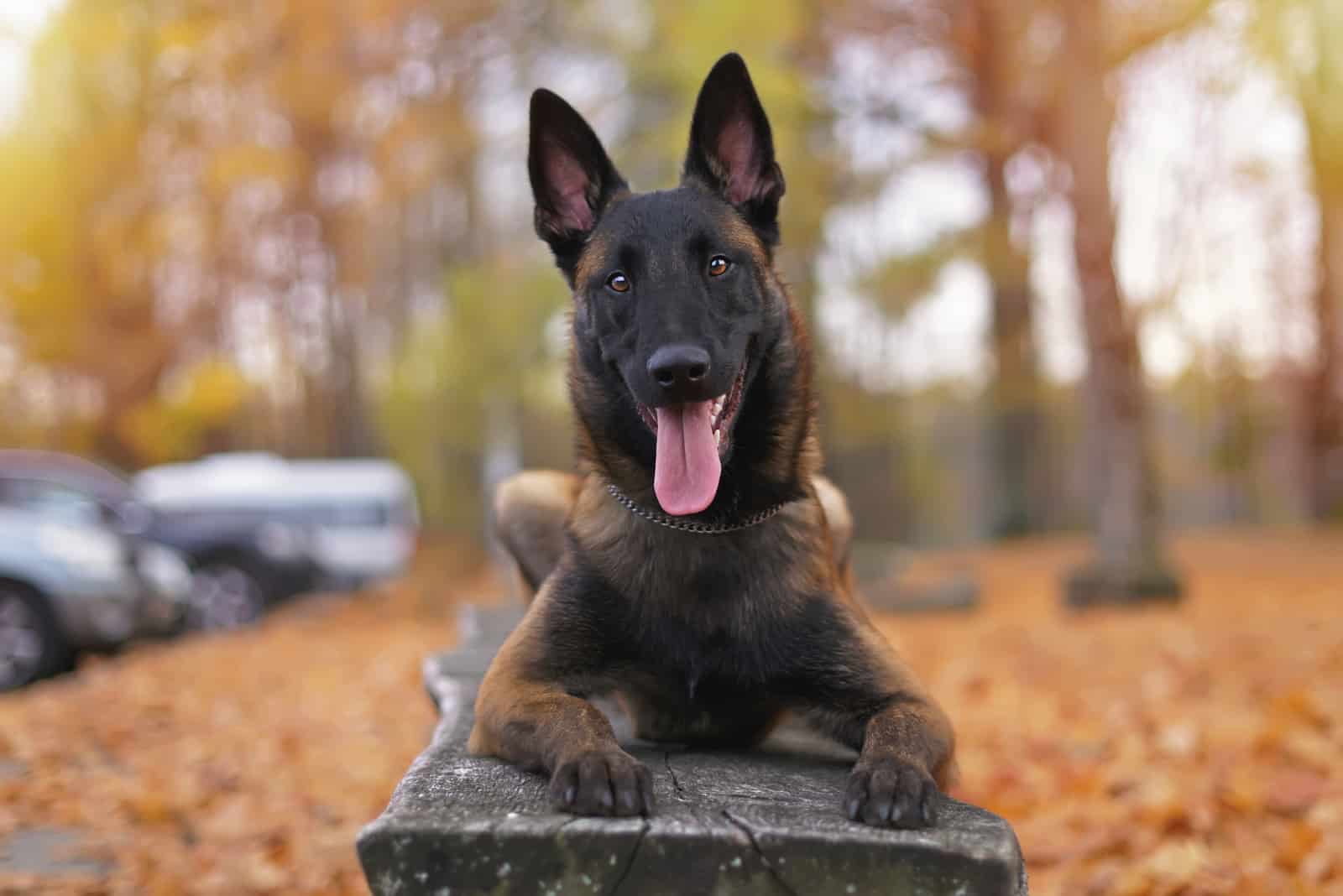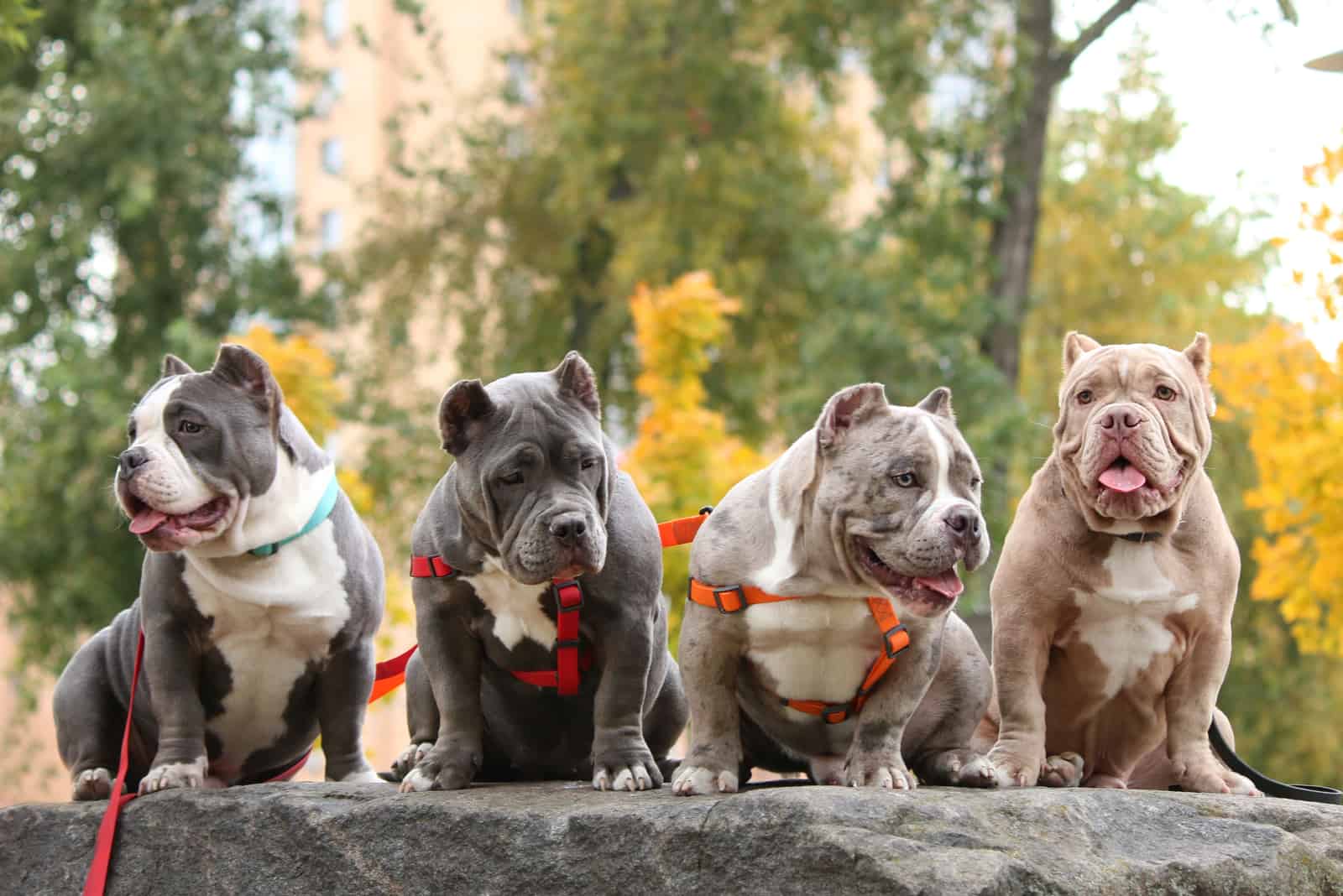Buying a pet is a big responsibility for the whole family, but it’s also a significant financial commitment. Medical fees, grooming, and food are just a part of the total cost of owning a pet.
I’m sure you have asked yourself, “How much do Beagles cost?”, at least once, especially if you’re interested in this dog breed.
Beagles are amiable, but they’re also one of the best dog breeds for owners who prefer spending time outside.
They’re considered the descendants of scent hounds, which were used for hunting small animals, although today, they’re trending as sweet family pets.
If you’re thinking about getting yourself a Beagle, I’m sure you’ll find all the necessary information about the purchase and financial costs of a Beagle in this article!
How Much Do Beagle Puppies Cost: Expenses Per Year

A new puppy is quite an investment, considering all the expenses that you’ll have even before the dog comes into your home.
According to the average costs of all medical expenses, food, insurance, and dog equipment (obligatory and optional), the average cost of a Beagle puppy is roughly $2,905.
The expenses can be anywhere from $1,555 to $4660, depending on the area you live in and the things you choose to invest in. This table shows the cost of all services and equipment you might invest in during the first year of your pup’s life:
| First-year costs | Range | Average cost |
|---|---|---|
| Puppy | $295–$1,125 | $550 |
| Medical | $395–$795 | $595 |
| Microchip | $25–$50 | $40 |
| Spay/neuter | $50–$300 | $175 |
| Food and treats | $115–$415 | $275 |
| Supplies | $150–$650 | $345 |
| Training program | $150–$200 | $175 |
| License | $10–$20 | $15 |
| Grooming | $0–$300 | $150 |
| Insurance | $350–$780 | $565 |
| Dog walking | $15–$25 | $20 |
| Total | $1,555–$4,660 | $2,905 |
How Much Do Adult Beagles Cost: Expenses Per Year

Almost every potential owner has asked themselves, “How much do Beagles cost?”, at least once before getting a new pet.
However, most people make a mistake considering only the initial dog price, without the additional expenses.
The first year of having a pup is the most expensive one regarding all of the obligations you need to fulfill. However, what makes the adult phase expensive as well is the insurance policy, which is significantly cheaper for Beagle puppies.
Basically, if you incorporate all of the things from the list below, having an adult pet won’t be significantly less expensive than owning a pup.
| Adult-year costs | Range | Average cost |
|---|---|---|
| Food and treats | $110–$465 | $285 |
| Medical | $330–$725 | $530 |
| Supplies | $55–$260 | $140 |
| Grooming | $0–$300 | $150 |
| License | $10–$20 | $15 |
| Insurance | $860–$2,550 | $1,670 |
| Total | $1365–$4320 | $2,790 |
How Much Do Beagle Puppies Cost?

It has been quite a challenge to find the average price of Beagle pups, mostly because there is a great difference between the purchasing and the adoption prices.
After going through extensive research, which included online websites like the American Kennel Club (AKC) Marketplace and Puppyfind, it can be said that the Beagle price can be between $500 and $1,130.
Essentially, the average price of a Beagle puppy would be around $550, although you might pay up to $2,600 if it’s a purebred canine of a champion bloodline.
The background of canines plays an important role in determining the price, along with some other factors, including age, colors, patterns (bicolor, tricolor, etc.), bloodline, etc.
Dog owners who are looking for a family pet aren’t focused on getting a champion bloodline pup, which is why they usually go for the less pricey doggie, or they decide to adopt one.
Adoption is a great option because it’s less expensive and more humane.
But, if you’re looking for a dog show participant, you’ll have to pay more for a top-of-the-line canine.
However, the purchasing cost isn’t the only expense you’ll have regarding your pup. There are plenty of other expenses that need to be covered in order to keep your pup healthy and happy.
The Initial Cost (Breeder, Shelter, Adoption, Puppy Mills)

The purchasing price is the initial cost of getting a pet, without any additional expenses, including dog food, health tests, checkups, etc.
The price of the dog varies greatly depending on the place you’re getting your pooch from, which will be explained in the next few paragraphs.
Breeding Programs
Reputable breeders might be one of the most expensive sources to get your future pet from, but it’s also considered one of the most secure sources.
A trustworthy breeder will provide the owner with all the details about the canine’s background, its parent breeds, any potential health issue (including congenital diseases), vaccinations, etc.
The average price of this dog breed in reputable breeding facilities would be between $800 and $2,000.
The price of a Beagle puppy depends on many factors, such as the coat shade and patterns.
The rarer the color, the bigger the price will be, but only if it’s by the breed standard or acknowledged by official kennel clubs, such as the American Kennel Club (AKC), the United Kennel Club (UKC), The Kennel Club (KC), and other important institutions for registering dog breeds and breed standards.
Adoption
Adopting a puppy is a noble thing to do, and it’s also a more affordable way to get yourself a new pet.
There’s a great number of rescue organizations that are dedicated to saving and finding new homes for cute pups, including Beagles, Poodles, Yorkies, and other dog breeds.
The adoption fee is usually between $50 and $500, depending on which breed you choose, the age of the canine, its well-being, etc.
The average cost of adopting a healthy dog would be somewhere around $300.
Essentially, the adoption fee is the cost of expenses that the rescue kennel had, including spaying/neutering, vaccinations, microchipping, checkups, etc.
Volunteers from these organizations take great care of every canine they find. Also, there are plenty of foster families who are more than ready to look after those little furry doggos until they’re moved into permanent homes.
Puppy Mills
There are times when it’s almost impossible to differentiate between a puppy mill and a reputable breeding facility, at least until you pay them a visit.
Unfortunately, a lot of people didn’t have the chance to notice the difference between the two in time, so they ended up with puppies that were sick or traumatized by the negative experience at the kennel.
Puppy mills generally care about profit more than anything. That’s why most canines end up growing in tight cages without any freedom to move.
The owners of such illegal facilities see Beagle dogs just as an opportunity to make more money by breeding them… nothing else.
The best way to recognize puppy mills is their price. If the price of a Beagle puppy is much lower than the price in other places, there are high chances it’s a puppy farm.
If you’re still not completely sure, you can look for other signs, such as:
• Fear of human interaction – Canines that were part of puppy farms almost never have a chance to socialize with other people or even dogs, which is why they tend to behave negatively.
• Mixed breed characteristics – (non-standard appearance, mixed traits of both parent breeds, etc.).
• Online sale only – If the breeding facility insists on online communication only, without letting you pay a visit.
• Multiple-breeds sale – The majority of reputable breeders usually raise and sell one or two dog breeds. On the other hand, puppy farm owners will breed as many breeds as they can (including the rare ones that cost the most).
• Pet store canines – Unfortunately, a great number of pet stores get their doggies from unregistered breeders, which is why they often don’t have documentation regarding the pup’s background or its health.
Of course, the decision is all yours. Some people like to pay more for a show-quality dog with a verified background, while others prefer to offer a permanent home to pups who were rescued from the streets.
The thing with puppy mills is that sometimes, people aren’t even aware that they’re getting a dog from such a place. On the other hand, there are dog owners who think that they’ll save pups if they buy them from these facilities.
Unfortunately, although the idea seems kind, it might not be the best, as you’re still helping the owners of such places make a profit.
How Much Does A Beagle Cost: Factors Affecting The Price
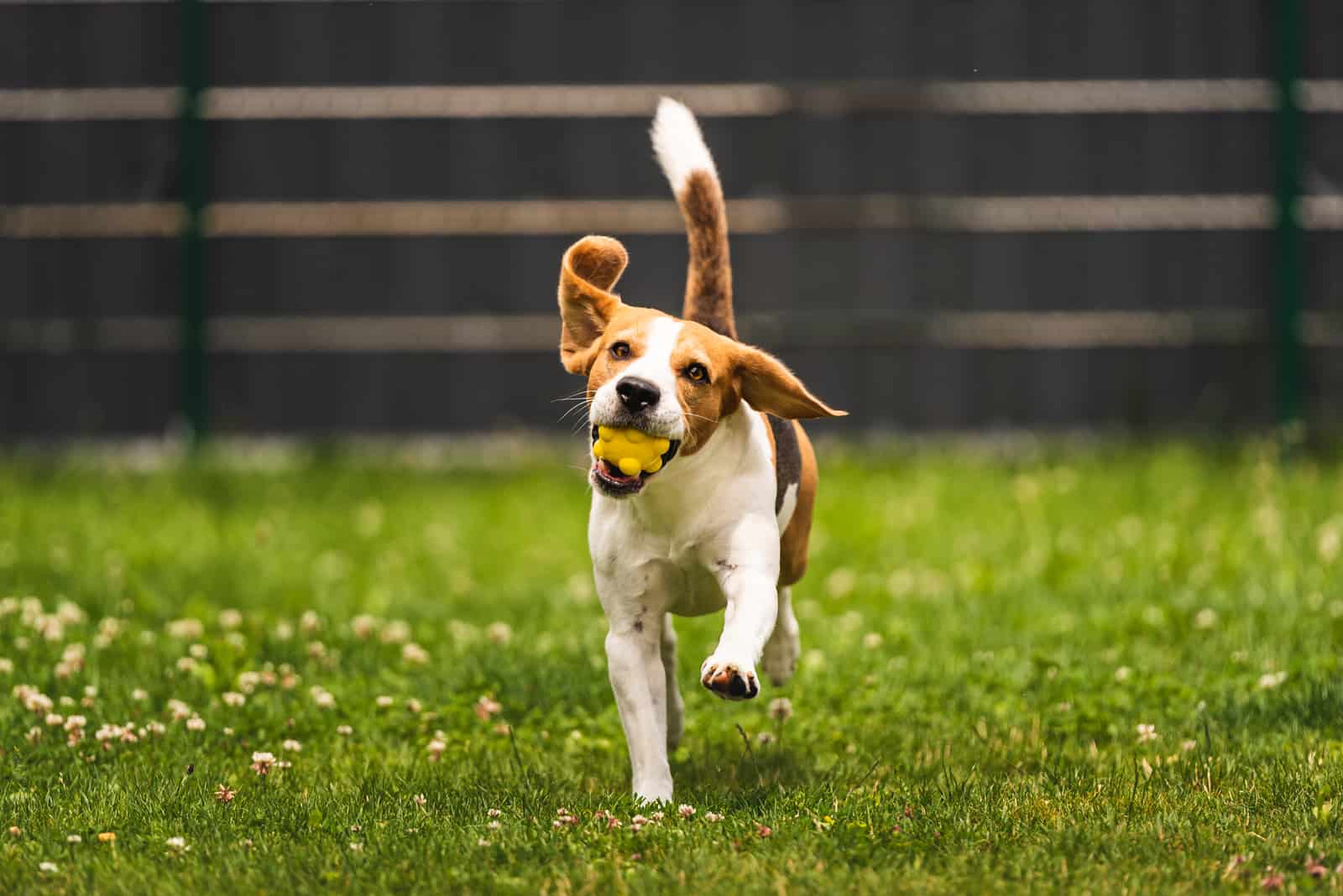
We can all agree that the Beagle purchase price range is pretty wide, which might create confusion among dog owners.
However, there are several good reasons why there is such a great difference in prices:
The type of dog
Dog breeds are generally one of the primary factors that have a direct impact on the price of a Beagle. If the canine is purebred, the price will be higher than for its crossbreeds.
Breeder reliability
As I mentioned above, the trustworthiness of the breeder plays an important role as well. If the breeder produces show-quality Beagles, they’ll cost more than canines without a champion bloodline.
Pedigree
Most reputable breeders are a part of official institutions such as the AKC, the UKC, the KC, and others. If they register every puppy and adult Beagle, the price of the dog will increase as well because of the additional fees.
Health examinations
If you have ever had a pet, you know how expensive all of the tests and evaluations might be. Breeders and rescue centers pay for everything and include the fees in the initial price. The expenses typically include vaccinations, microchipping, deworming, health tests, regular checkups, etc.
Training programs
A good puppy or more money in the pocket? The decision is all yours, which is why you can choose between breeders who include training programs in the price. It might cost you a bit more, but in the long term, you’ll end up with a well-behaved pet.
Popularity of the dog breed in the area
The demand for a certain breed can be higher in some areas than in others. Small canines might be more common in urban areas where most people live in flats.
Beagles are very popular as hunting or camping companions because they’re hunting dogs by nature. Therefore, there are high chances that the price of this breed will be substantially higher in the hilly areas.
Dog’s age
Pet canines are usually bought as pups because of the general belief that the pet and the owner will build a stronger relationship if the dog is raised by the same person/family from the beginning.
Therefore, a Beagle pup might cost you more than an adult canine, especially if you’re getting it from a registered breeder.
Coat shades and patterns
Coat hair determines the price of the canine more often than you’d think. Basically, if a certain shade increases in popularity, the price will go up as well.
Also, pups that are covered in colors recognized by the official institutions will always be more pricey than those colors and patterns that are still not acknowledged by kennel clubs.
As you can see, there are plenty of reasons why any type of dog, including Beagles, has such a wide range in price.
Therefore, if you’re looking for a dog that’ll be your loyal companion and family member, I’m sure you’ll be more interested in its general well-being rather than its colors or the popularity of its breed.
On the other hand, there are some people who are more than ready to pay a higher amount in order to get a canine with dog show qualities that are up to the breed standard.
Of course, the decision is completely up to you and is based on your needs and wishes. Keep in mind that it’s better to avoid puppy mills and such places by any means.
You can do that by adopting a pup from a shelter or by getting a breed-standard pet from a reliable breeder.
How Much Does A Beagle Cost: Are They Expensive?

Now that the confusion about the initial cost of a Beagle is gone, it’s time to talk about the second part of the total cost of owning this canine breed.
The additional costs of owning a canine, be it a puppy or an adult dog, are often overlooked. Some people put their primary focus on the purchase, but don’t think through the other costs that come afterward.
After thorough research through the prices of additional equipment, food, etc., it’s safe to say that a new owner will spend up to at least $1200 for the first year of the pet’s life.
Of course, the price depends on the place you live in and the availability of the supplies for pets.
As your dog becomes older, the expenses will decrease to the point where you’ll have to pay up to minimally $1,000 per year to cover all necessary expenses (except vet expenses).
Medical Costs
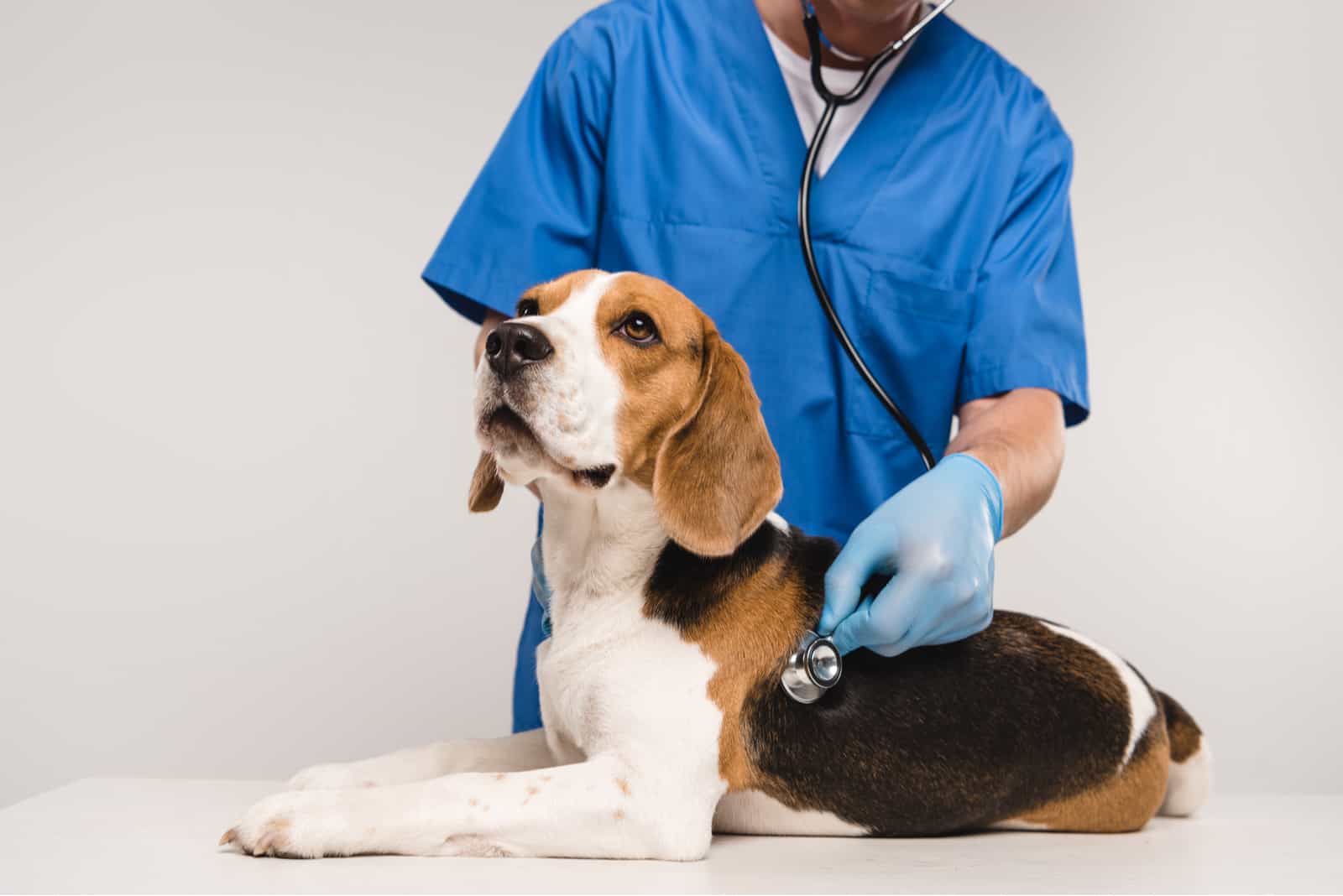
During the first year of a Beagle’s life, most expenses are related to its health and overall well-being.
According to healthcare professionals, the medical expenses can go up to $595 for the first 12 months of the pup’s life.
However, as the pet grows older, the expenses will be lower as well, but you’ll still have to pay up to $530 for every year of your pup’s life.
Puppy vet expenses
Licensed veterinarians strongly recommend at least three checkups during the first 12 months of a Beagle’s life.
The first checkup is recommended after two months of age, with obligatory medical treatments such as vaccinations, motoric and sensory tests, a fecal examination, etc.
Each round of vet visits can cost anywhere from $60 to $170, depending on the procedure of each examination.
For example, flea and heartworm prevention is strongly recommended in each month of the Beagle’s first year of life. This procedure will cost you somewhere between $10 and $15 per visit regardless of the other medical costs mentioned above.
Vaccinations
There are standard vaccines that each puppy receives during the first 12 months of its life. However, some puppies have to get additional vaccines that’ll keep them protected from illnesses caused by the external conditions they’re exposed to (the area they live in or activities they might be involved in):
• Lyme – Ticks are very common in canines raised on a farm or near a forest. These little pests often cause Lyme disease, which might be very dangerous for your pet. However, if the canine receives the necessary vaccines in time, the risk of getting this disease will be significantly lower.
• Leptospirosis – If you’re an adventurer who prefers to spend time in wildlife, you’ll have to make sure that your furry companion is safe from this serious lung disease.
The best way to prevent any life-threatening consequence of this disease is to react in time and get your pup for a vaccination as soon as possible.
• Influenza – This is a very common condition among pets that spend a lot of time in daycare centers. The vaccines can be provided by the vet or the daycare itself (although you’ll have to pay for it).
Another cost that is frequent for the majority of pet canines is the price of spaying/neutering. This procedure can cost between $100 and $300, depending on the region you live in.
The best time for this procedure is between the sixth and ninth month of life. However, small dogs might need to have it done even earlier (at four months of age) because they enter dog puberty at an earlier age.
Adult vet expenses
Adult dogs might not have to be examined as often as puppies, but the canines’ health shouldn’t be neglected either.
A great number of vets recommend a minimum of one annual visit to the doctor for examination, heartworm and blood tests, vaccination, and other procedures if needed.
This is the best way to keep the adult dog’s health in check and prevent any serious health problems in time.
All these tests and examinations might cost you from $120 to $270, depending on the area you live in and the vet you choose.
Flea and heartworm treatments will be between $65 and $200, depending on the Beagle’s age.
At this point, there aren’t any obligatory vaccines, but there are shots that might improve your dog’s overall health and protect it from common diseases. These vaccines go from $15 to $45, depending on the type of vaccine it’s getting.
Common health issues
Hip dysplasia
Hip dysplasia is one of the most frequent conditions you’ve heard of because it’s present and a risk in almost every dog breed.
This issue can’t be noticed at a young age, but if you notice that your dog is walking strangely or that its back legs seem loose, it’s time to see a doctor.
Dogs can live a perfectly normal life with this health issue if it’s treated properly and in time.
Epilepsy
This is one of the most prevalent neurological conditions among canines in general. It appears in more than 0.75 percent of canines.
This disease is caused by seizures that happen on a regular basis because of a brain malfunction. Epilepsy can be inherited in some cases, but it can also be caused by living conditions.
If your pet starts acting in a strange way, you should contact your vet as soon as possible. The symptoms of epilepsy include twitching, running in a circle, staring at an empty space, drooling, uncontrollable shaking, etc.
Cherry eye
Not many people know that most animals, including canines, actually have one more eyelid that is hidden in the lower lid.
The medical name for this phenomenon is the “nictitating membrane”. The main function of this lid is to keep the eyes safe from any environmental condition during playing, running, hunting, or any other outdoor activity.
This additional eyelid has a particular gland as well, which provides the eyes with a major amount of the protective tear layer.
Cherry eye typically occurs when the protective gland prolapses and leaves your pet with a red eye.
This isn’t a life-threatening condition, but it might have an impact on the quality of your pet’s life if not treated in time.
Cherry eye is quite common among brachycephalic canine breeds such as Beagles, Bulldogs, Shih Tzus, Cocker Spaniels, and others.
Hypothyroidism
The thyroid gland is the main producer of the hormone known as thyroxine. The main role of this hormone is to turn every meal into energy.
However, if a dog suffers from this condition, it means that the gland can’t produce enough thyroxine. This disease appears regardless of the age or breed of a canine, but it’s more common in Beagles, Irish Setters, Labradors, Dachshunds, Golden Retrievers, Dobermans, Cocker Spaniels, and Boxers.
There’s an unclear connection between hypothyroidism and spaying/neutering. Some vets have noticed that both male and female canines have a higher chance of suffering from this condition, although there are still no scientific explanations as to why.
The main symptoms of this disease include dry skin, dizziness, constipation, fatigue, etc.
It’s important to mention any strange behavior you notice in your pet when you go to the vet because that may be the only way for them to discover such diseases.
Glaucoma
This is one of the fast-progressing illnesses that can result in retinal and optic nerve impairment.
It’s believed that almost 50 percent of canines will lose vision in the afflicted eye due to this disease.
There are two types of glaucoma that affect canines: open- and closed-angle glaucoma.
The first one is described as a painless loss of vision that happens over the course of several years. On the other hand, the latter causes a lot of pain, blindness, and severe redness.
Excessive tearing, dilated pupils, red eyes, and eye rubbing are just some of the symptoms that indicate the presence of glaucoma.
Distichiasis
Have you ever noticed that there’s something wrong with your pet’s eyelashes? There’s just something that isn’t right, but you can’t really see what the problem is.
Well, that issue is known as Distichiasis. This is a frequent disorder in which the lashes grow from the edge of the lid rather than on the skin part.
Even though the lash hair is very thin and soft, it can still cause a lot of issues, including eye infections or even corneal (eye) ulcers.
Essentially, there’s no effective treatment for this condition unless the eyes get irritated or infected. In that case, you’ll have to pay for the vet, lubricants, and certain medical procedures.
Meningitis
This is a neurological condition in which the membranes (meninges) that cover the central nervous system get infected.
This disease doesn’t occur very often in canines, but unfortunately, Beagles are one of the rare dog breeds that can suffer from this illness.
It’s important to note that this condition might be caused by any inflammation in a Beagle’s body.
Fever, weakness, and loss of appetite are some of the most common signs of this condition.
Cataract
In most cases, this is an inherited condition that can appear in a great number of dog breeds, including Beagles, French Poodles, American Cocker Spaniels, Boston Terriers, etc.
If the cataract isn’t inherited, it might be the result of an eye injury or diabetes.
Cataracts can be surgically removed, which will help your pet see again, especially in cases of more severe vision impairment.
Patellar luxation
This is a frequent orthopedic condition that is commonly seen in small-breed canines.
Essentially, this condition is caused by the dislocation of the knee cap from the trochlea (the base).
Unfortunately, it can be months or even years before the luxation gets noticed, which might leave permanent damage on ligaments, hips, and thighs.
Surgery is the only way to repair the damage in most cases if it’s done before arthritis appears.
Central Progressive Retinal Atrophy (CPRA)
To understand what CPRA means, it’s necessary to explain what PRA stands for.
PRA (Progressive Retinal Atrophy) is a condition that can cause vision impairment in canines. It has a big impact on the retina’s cells, and can cause blindness in the most severe cases.
CPRA or RPED (Retinal Pigment Epithelial Dystrophy) is a rare type of PRA. This condition causes damage to the pigment within the retina, which results in the canine’s lack of vision in dim light.
This condition appears often in senior dogs, but it doesn’t necessarily result in total blindness.
Unfortunately, there’s not much to be done here. Neither PRA nor CPRA can be cured at this moment, but some vets do suggest antioxidant therapy, which can’t stop the progression, but can make it slower.
Supplies

Supplies are generally considered as additional dog equipment, which covers everything but medical expenses and the initial purchase cost.
The table presented below shows an approximate view of expenses regarding all of the things you and your furry friend will find essential or practical to use.
Of course, the prices shown below represent the average cost based on the biggest and most popular store chains like Walmart, Amazon, Costo, etc. The expenses from the table below might vary from the region you live in.
| Dog equipment | Price Range | Average cost |
|---|---|---|
| First-aid supplies | $15–$50 | $30 |
| Dog bed (24″ or 30″) | $15–$65 | $35 |
| Bowls for water and food | $5–$20 | $15 |
| Dog crate (24″ or 30″) | $20–$80 | $40 |
| ID tag (with phone number) | $5–$20 | $10 |
| House training pads | $15–$45 | $25 |
| Shampoo | $5–$20 | $10 |
| Brush | $5–$45 | $15 |
| Pooper scooper | $10–$30 | $20 |
| Plastic poop bags | $15–$110 | $55 |
| Odor removal spray | $5–$20 | $10 |
| Tooth-brushing kit | $5–$15 | $10 |
| Toenail clippers | $5–$20 | $10 |
| Dog collars (x2) | $5–$40 | $20 |
| Leash | $5–$20 | $10 |
| Toys | $15–$50 | $30 |
Of course, these aren’t monthly expenses, but the initial supply costs that will go down on monthly and yearly bases.
Therefore, the average cost of a Beagle as a pet can be estimated at $355.
However, do keep in mind that there might be some additional things you’ll need to buy such as harnesses, muzzles, playpens, clothing, etc.
You can save some cash by waiting for non-essentials to be on sale, or you might visit some second-hand stores to find clothes and accessories.
Pet Insurance Cost
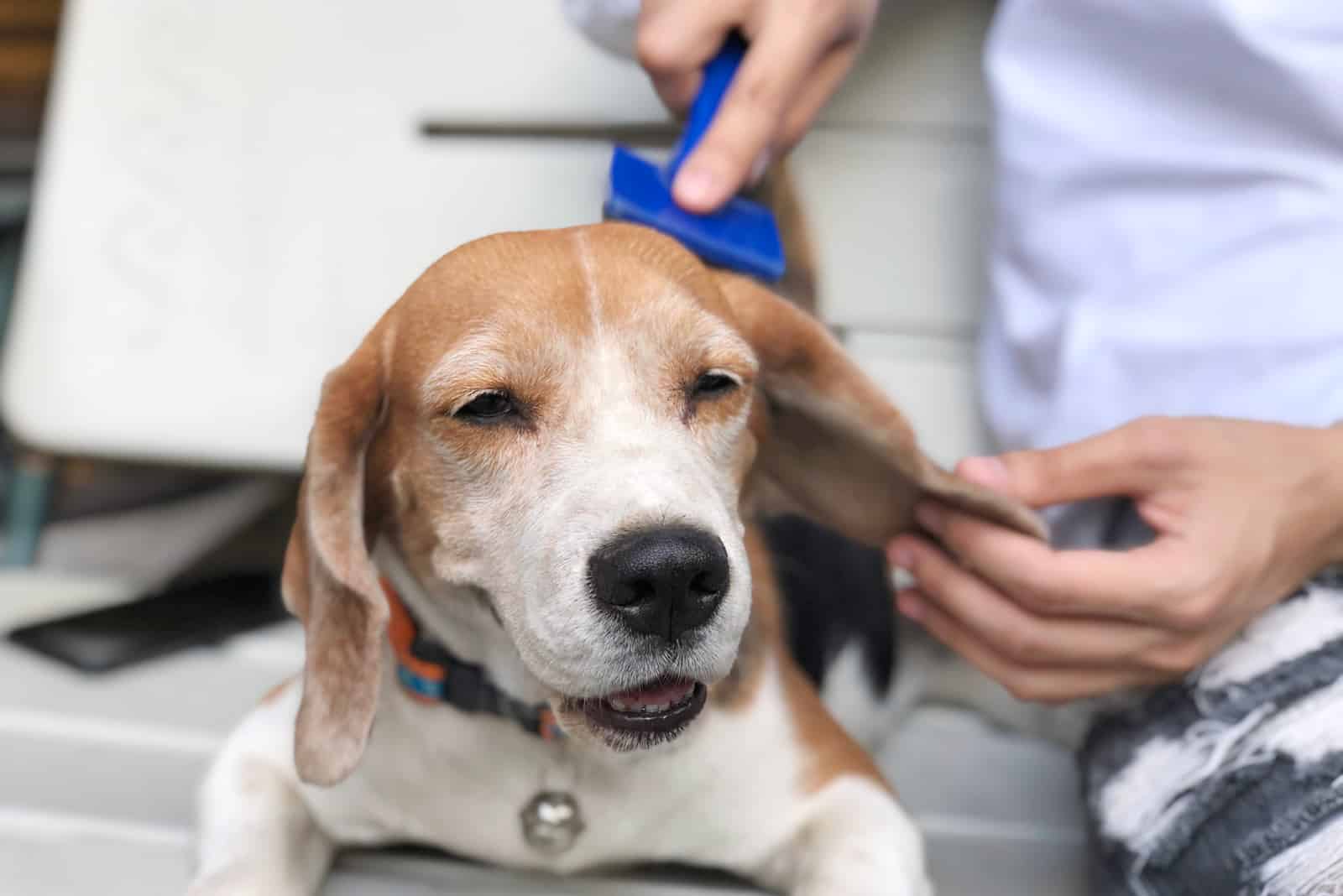
According to the North American Pet Health Association, the cost of the complete insurance package (accidents and diseases) is about $570 per year.
Owners can choose to pay insurance only for accidents, and that decreases the price to $190 per year.
Keep in mind that these costs are based on the approximate price of insurance, and they might vary depending on the insurance plan and the company you choose.
This is why it’s important to get precise information from the pet insurance companies regarding the insurance plans and the prices of each.
There are certain companies with extensive health care insurance plans. However, these packages will cost a lot more than the standard insurance plans.
Most of the health issues that were mentioned earlier in the article require a great amount of money to be treated.
Both purebred and mixed breed canines can develop at least one of these diseases, which is why most owners decide to pay more for the insurance rather than taking any risk.
Pet insurance has become one of the most popular choices among dog owners in the U.S. because it’s still more affordable than certain medical procedures for canines.
How Much Do Beagles Cost: The Total Cost

The life expectancy of Beagle canines is somewhere between 10 and 15 years, which means you’ll spend up to $25,000 without an insurance policy.
A crossbreed such as the Beagle Coonhound, the Beagle Poodle, the Beagle Yorkie, or another cross might cost you a bit more.
Beagles are among the most inexpensive dog breeds to own because they generally require low maintenance.
However, you might have to pay a bit more for dog boarding and dog walking because they’re known as very energetic doggies.
How Much Do Beagles Cost: Final Thoughts
In case you have ever wondered, “How much do Beagles cost?”, I hope this article has given you the answer to this question.
As you can see, Beagles don’t cost as much as some other breeds, and they’re great family dogs, which is usually the deciding factor for most family dog owners.
Also, these pups are great hunters, which helps them to easily acquire social skills.
On the other hand, Beagles don’t like to spend any time alone; therefore, if you’re not sure whether you can find enough time for your pet, this dog breed might not be the best option for you.
Related Content:
• Basset Hound Vs. Beagle: Which One Is The Breed For You?
• Blue Tick Beagle – A Complete Guide for Beginner Owners
• Corgi Beagle Mix: Could This Be The Designer Dog For You?
